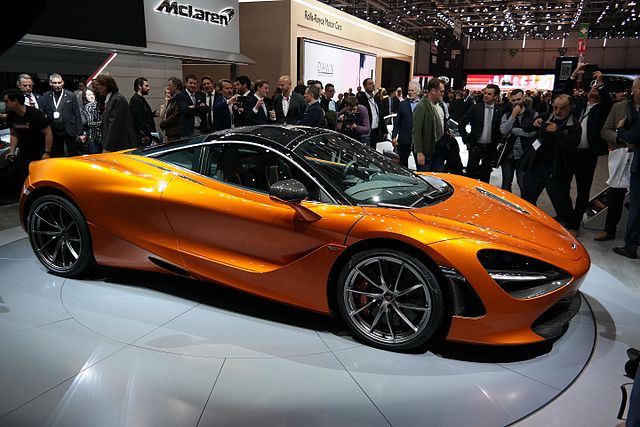McLaren P1 thoroughly explained

British specialist marque McLaren unveiled last month at the 2013 Geneva Motor Show the long-awaited production version of the P1 which will be made in a limited quantity of 375 cars. Each will carry a staggering starting price of 866,000 pounds (about 1 million euros or $1.15 million). The company’s initial plans were to make 500 units but Ron Dennis reduced this number to 375 after meeting with possible clients who were afraid the car would lose its exclusivity if it was produced in a larger number. Most likely deliveries will start before the end of the year, just about the same time when arch rival LaFerrari will arrive at the first lucky customers.

The McLaren P1 is motivated by a 3.8-liter V8, twin-turbo, mid-mounted engine outputting 737 HP (542 kW) at 7,500 rpm and a peak torque of 720 Nm (531 lb-ft) from 4,000 rpm. The electric motor provides an instant power of 179 HP (132 kW) and 260 Nm (192 lb-ft), resulting in an impressive combined output of 916 HP (674 kW) and 900 Nm (663 lb-ft). The entire horsepower is channeled to the wheels through a twin-clutch, seven-speed Graziano transmission.
McLaren says the P1 can be driven only on electric power for up to 12.4 miles (20 km) at an average speed of 30 mph (48 km/h). It has a drag coefficient of 0.34 and is capable of generating no less than 1,322 lbs (600 kg) of downforce which represents five times more than the MP4-12C. The P1 boasts a carbon fiber chassis tipping the scales at 220 lbs (100 kg), while the car is 300mm longer than the F1. It’s also a bit longer and wider than the aforementioned MP4-12C. Thanks to the lightweight construction, the P1 weighs 3,086 lbs (1,400 kg).
If the driver turns on the IPAS – Instant Power Assist System, the McLaren P1 can run the 0-62 mph (0-100 km/h) sprint in under three seconds, while 0-124 mph (0-200 km/h) takes under seven seconds. 0-186 mph (0-300 km/h) is achieved in 17 seconds, on its way to an electronically-capped top speed of 217 mph (350 km/h).
IPAS refers to the electric motor that can be turned on by pressing a button mounted on the steering wheel. Once the driver does this, McLaren says the car is capable of providing the throttle response of a normally-aspirated engine. There’s also a second button labeled DRS which if pressed will activate the Drag Reduction System (DRS). Once this is done, the rear wing will reduce in angle in order to lower drag by 23 percent. DRS is deactivated by releasing the button or pressing the brake pedal.
The interior boasts a driver-oriented cockpit with extensive use of carbon fiber to keep the weight as low as possible. However, the P1 does come with amenities such as a premium sound system, climate control and satellite navigation. The seats and steering column are adjustable, while the very thin carbon seat shell weighs 23.1 lbs (10.5 kg). All of the carbon surfaces come without the top layer of resin to lower the car’s weight by 3.3 lbs (1.5 kg).














One Comment